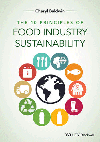The ins and outs of clean labeling
Customers want dairy with all-natural ingredients and nothing artificial

Clean-label dairy can be more about perception than actual health benefits. It’s also a moving target. Dairy processors must scrutinize the latest market research to understand what consumers what in their dairy delights — and what they want taken out.
Real and natural are in
Clean-label expectations vary by dairy product category.
“Yogurt consumers are more health-conscious,” said Ivan Gonzales, marketing director, dairy segment, Ingredion. “Yogurt is typically eaten in the morning when consumers are more aware of healthy eating. In contrast, ice cream is typically eaten later in the day when consumers are seeking a more indulgent moment.”
Ingredion conducted a study in 2017 to measure the impact of various claims on consumer purchase intent for yogurt. “All natural” came out on top. “High protein” and “with probiotics” also ranked high as desirable attributes. As drivers of purchase intent, those claims “far outranked” others such as “vitamins and minerals,” “fiber” and “added calcium,” Gonzales said.
“U.S. consumer awareness of probiotics is high, recently reaching 80%,” noted Megan DeStefano, probiotics marketing leader, DuPont, “and overall consumer sentiment towards probiotics is extremely positive. In the U.S., many consumers think first of yogurt when thinking about probiotics, so there is a large opportunity to fortify yogurt, and other dairy products, with probiotics that offer clinically documented health benefits.”
On the all-natural front, Chobani’s new cherry vanilla Greek yogurt drink boasts “only natural ingredients.” The brand emphasizes the inclusion of real fruit.
“According to analyses of new product trends, ‘real ingredients’ are the choice of today’s consumers, from boomers to millennials,” said Tom Payne, industry specialist to the U. S. Highbush Blueberry Council. “The highbush blueberry industry developed the Real Blueberries seal to help food producers feature real blueberries in their products.”
Dairy manufacturers also can choose from a variety of natural functional ingredients.
“For dairy, our clean-label offerings for stabilizers include functional native starches, pectin and gums to name a few,” said Jessica Dunkel, senior food technologist, DuPont. “We also offer protective cultures as natural preservatives.”
Artificial is out
When consumers were asked to define a healthy food in the 2017 International Food Information Council study, more than 50% of consumers listed “free from artificial ingredients, preservatives or additives” in their top three attributes. However, the same study shows a gender gap. Men tended to opt for products with great taste, while women favored foods without artificial ingredients.
“One of the benefits of dairy is that it starts out ‘clean label’ right out of the cow, which is already an improvement over many of the vegetable protein analogs,” said Bill Sipple, application specialist, DuPont. “Normal pasteurization kills pathogenic bacteria, and therefore, preservatives are not allowed in many normal dairy products by Standard of Identity.
“For ice cream, there is no need for any kind of shelf-life-extending preservative, anti-bacterial, etc., since it is frozen,” he added. “Many cultured dairy products have live bacteria cultures which protect the dairy product from invasive species.”
Consumers divided over sweeteners
Opinions are divided on artificial sweeteners, according to the 2017 Ingredion study. Gonzales noted that U.S. consumers prefer real sugar, but Canadians are quick to ask how much sugar is in the product.
“Natural sugar is king in dairy, but ‘clean label’ alternatives may include sweeteners such as stevia in place of artificial ingredients such as aspartame,” said Ross White, senior group manager, DuPont.
One key to achieving a clean label is to educate consumers about the function of ingredients in food. Simply indicating why an ingredient is in food might increase acceptability. Ultimately, however, the food must meet consumer expectations for flavor, texture and price for it to succeed.
Looking for a reprint of this article?
From high-res PDFs to custom plaques, order your copy today!







